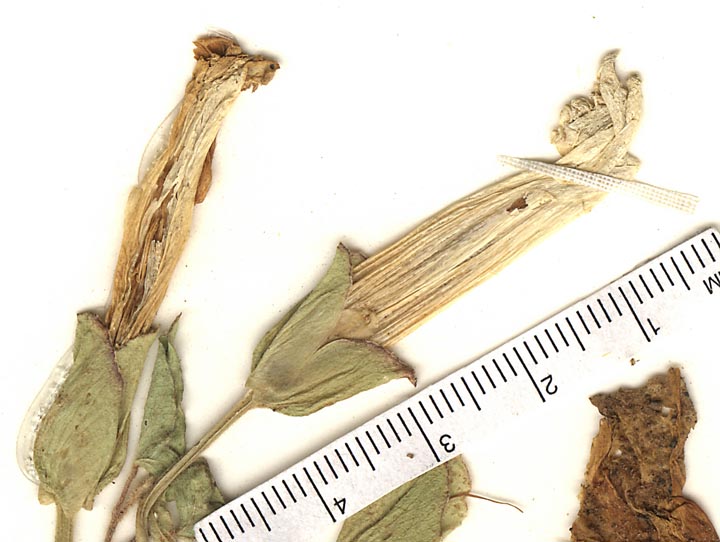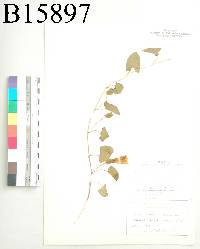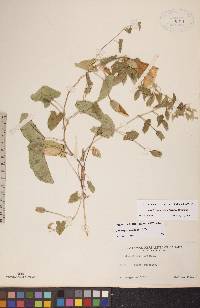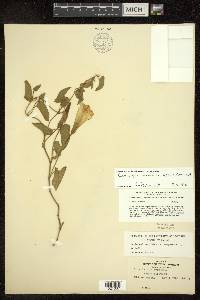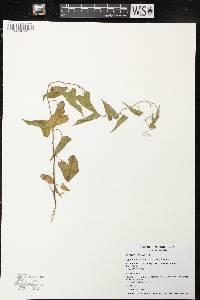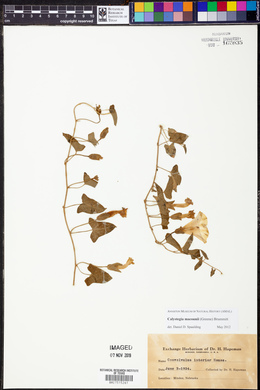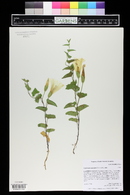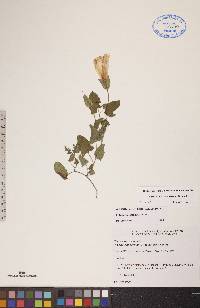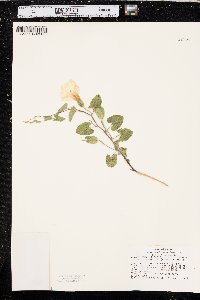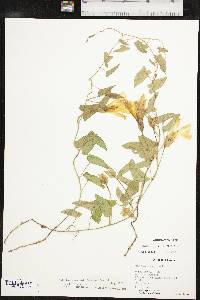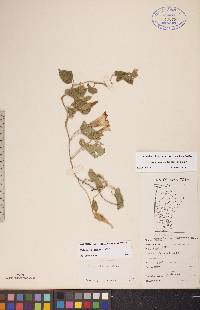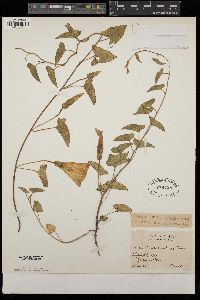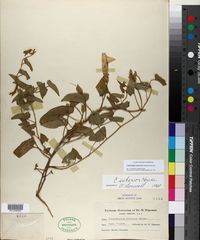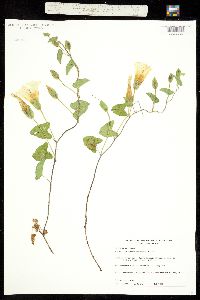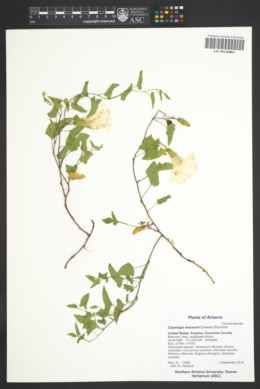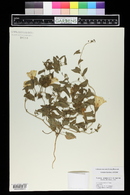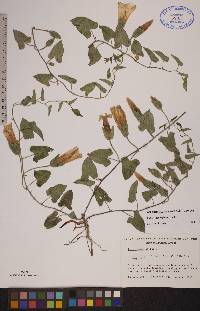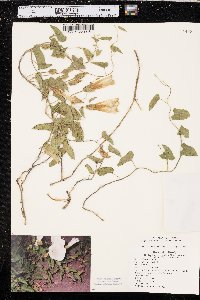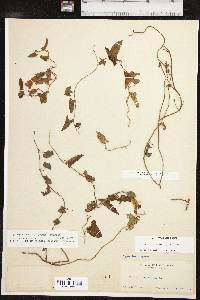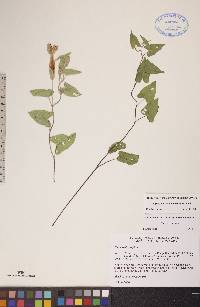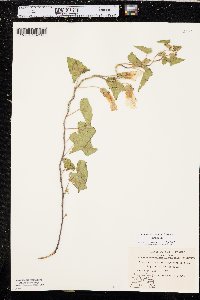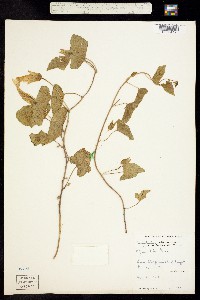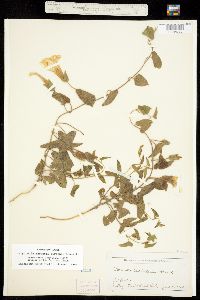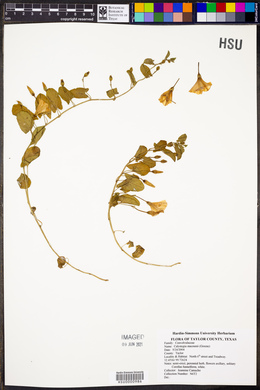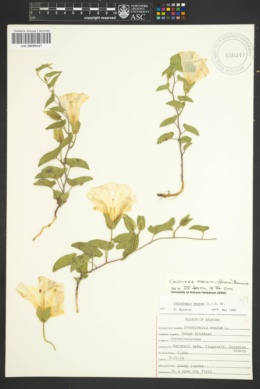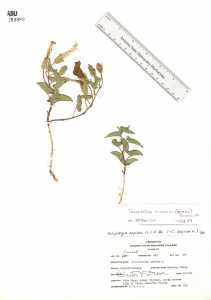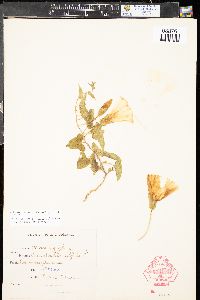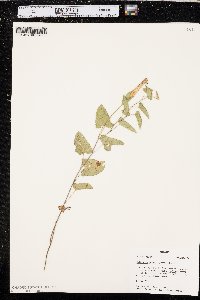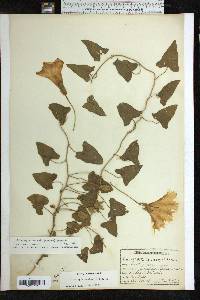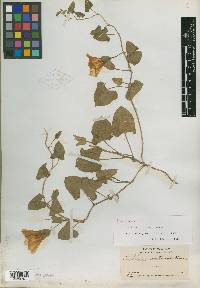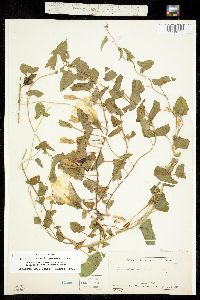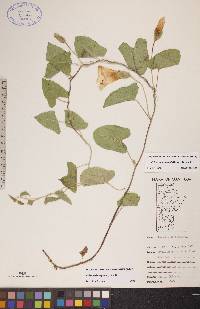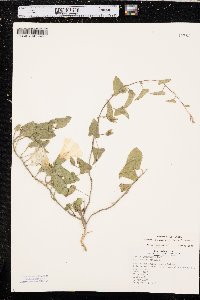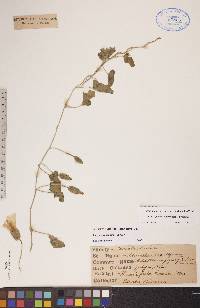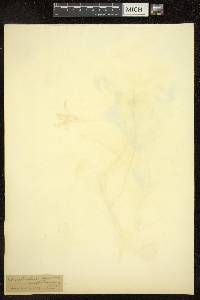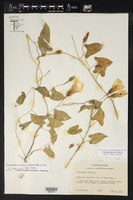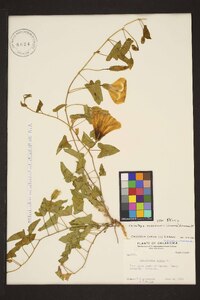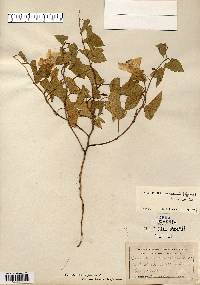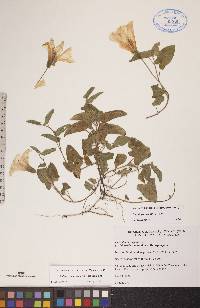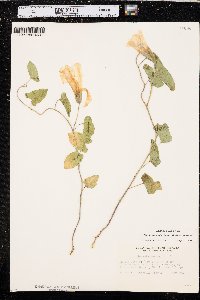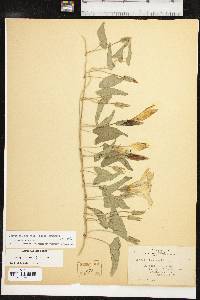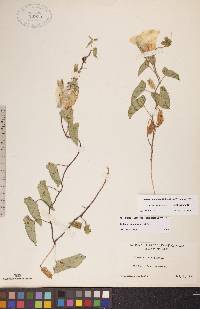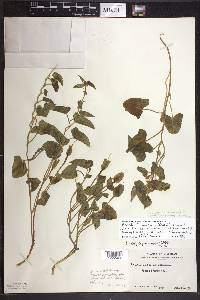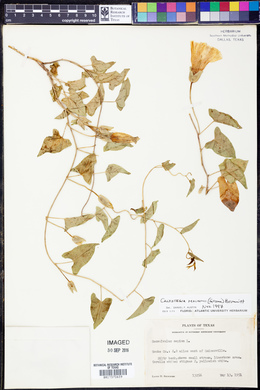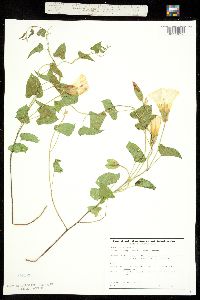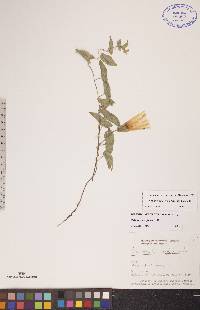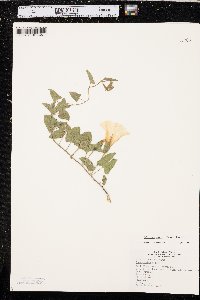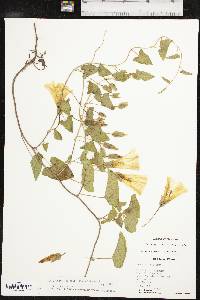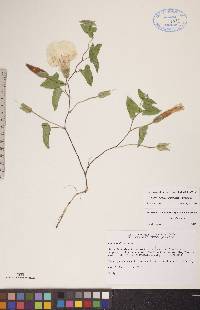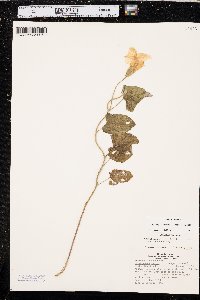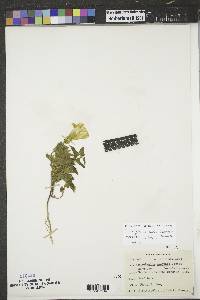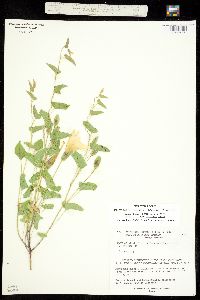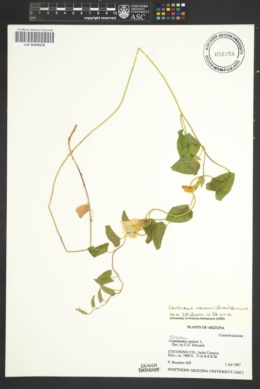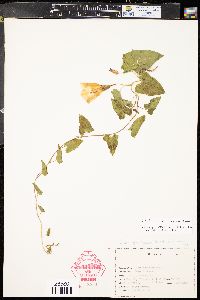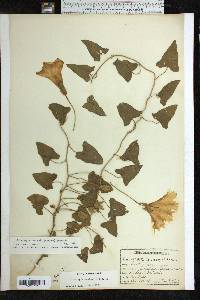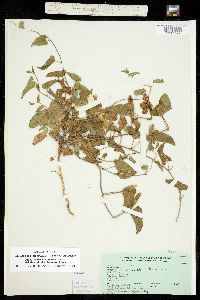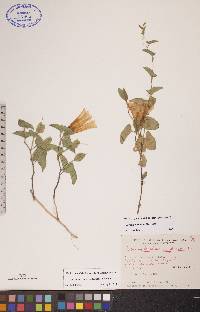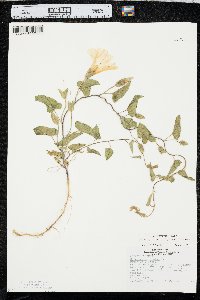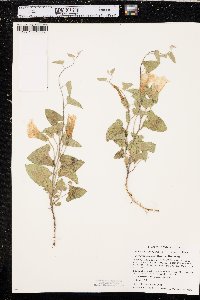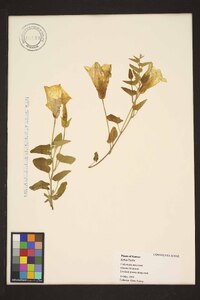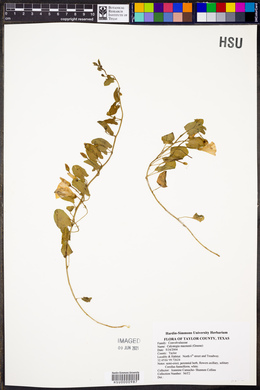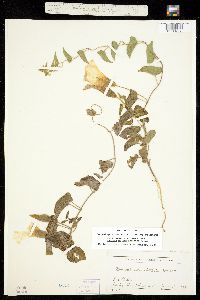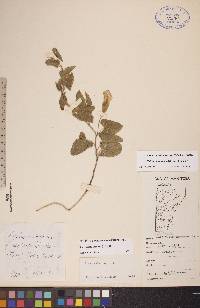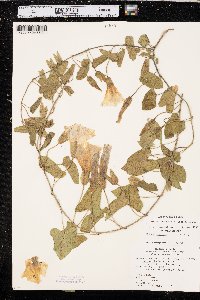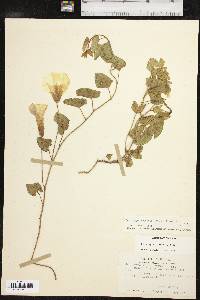Calystegia macounii
|
|
|
|
Family: Convolvulaceae
Macoun's False Bindweed
[Convolvulus interior House] |
PLANTS: Herbs with erect or sparsely twining stems, finely pubescent. STEMS: simple or branched, usually from near base. Leaves: ovate to ovate-lanceolate, 2-6 cm long, 1-5 cm wide, basally cordate to sagittate, the lobes rounded, less often angled, apically obtuse to rarely acute, the margins entire; petioles 0.5-40 mm long INFLORESCENCE: solitary flowers, frequently arising from the lower few axils; peduncles 3-5 cm long, rarely longer; bracts surrounding the calyx, ovate to ovate-mucronate, mostly obtuse, sometimes acute Flowers: sepals elliptic to ovate, equal, 10-12 mm long, 5-7 mm wide, thin, transparent at least on margins, acute to acuminate, mucronate, glabrous to ciliate; corollas funnelform, white, 4-5 cm long; stamens 25-28 mm long, the filaments basally glandular pubescent, the anthers 4-5 mm long, basally sagittate; style 20-23 mm long Fruit: FRUITS capsular, 4-valved, surrounded by enlarged sepals and sometimes by bracts, globose to ovoid, brown. SEEDS not seen; 1-4, glabrous, black to dark brown, smooth to verrucose Misc: Moist habitats, near lakes and streams; 1950-2150 m (6400-7000 ft); Jun-Jul REFERENCES: Austin, Daniel F. 1998. J. Ariz. - Nev. Acad. Sci. Convolvulaceae 30(2): 61. Perennial herb 8 - 20 cm tall Stem: short, upright, ascending, hairless, and arising from a very deep rhizome. If the stem is cut or broken, it exudes a milky sap. Leaves: alternate, long-stalked (about equal to blade), non-toothed, hairless, about 5 cm long, broadly arrowhead-shaped. Flowers: several, singly in leaf axils, long-stalked (longer than subtending leaf stalk), white, showy, 5 - 7 cm long, radially symmetric, tubular to funnel-shaped. Each flower is immediately subtended by two large (2 - 2.5 cm long), hairless, non-toothed, oval (broad base and rounded tip) bracts which hide the sepals. Sepals: five, green, more or less lance-shaped, but obscured by much larger subtending bracts. Petals: five, but fused into a long tube with expanded limb, which may be shallowly five-lobed or merely wavy along edges. Stamens: five, attached to inside base of petal tube, then separating, but not extending beyond petal tube. Pistil: with one, single-chambered, superior ovary; and a single, slender style which ends in two oblong, blunt, and somewhat cylindric stigmas. Fruit: stalked, several-seeded, single-chambered, rounded capsules. Similar species: Calystegia macounii is probably most easily confused with C. spithamaea, except that species is densely hairy on the stem, leaves, and bracts, plus the leaves subtending the flowers are on much shorter stalks (less than half the length of the blade). The other species of Calystegia in the Chicago Region have twining or climbing stems, not erect stems. Flowering: June Habitat and ecology: A waif, introduced to the Chicago Region and found only once along a railroad ballast. Occurence in the Chicago region: non-native Etymology: Calystegia is a combination of the Greek word kalyx meaning the whorl of sepals (calyx) of a flower, and stegon, meaning cover; together referring to the bracts that conceal the calyx. Macounii is most likely named after Canadian naturalist John Macoun. Author: The Field Museum |

